

Matt Campbell
2026 Hyundai Tucson Hybrid review
1 Hour Ago
The all-new GranTurismo picks up where its iconic predecessor left off, with achingly gorgeous looks, luxurious cabin and an engaging drive.
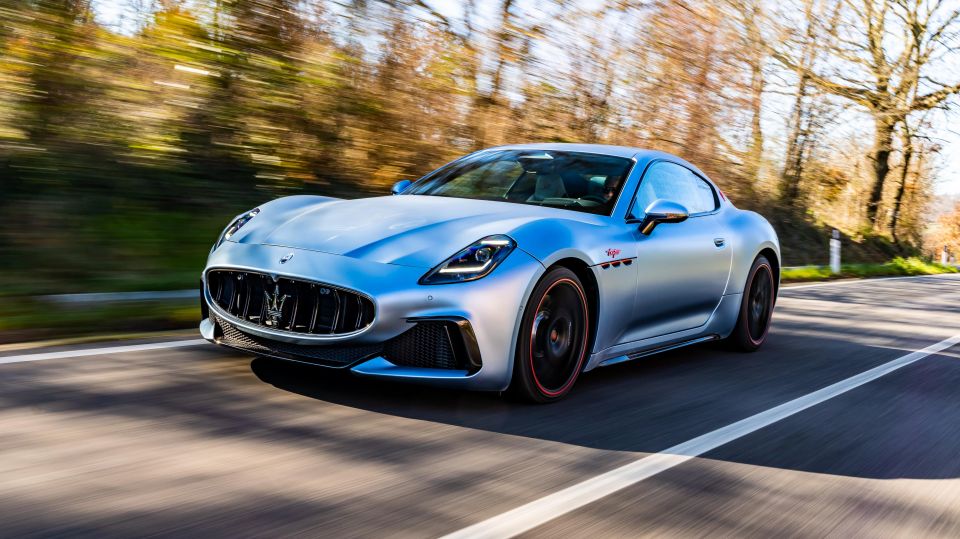
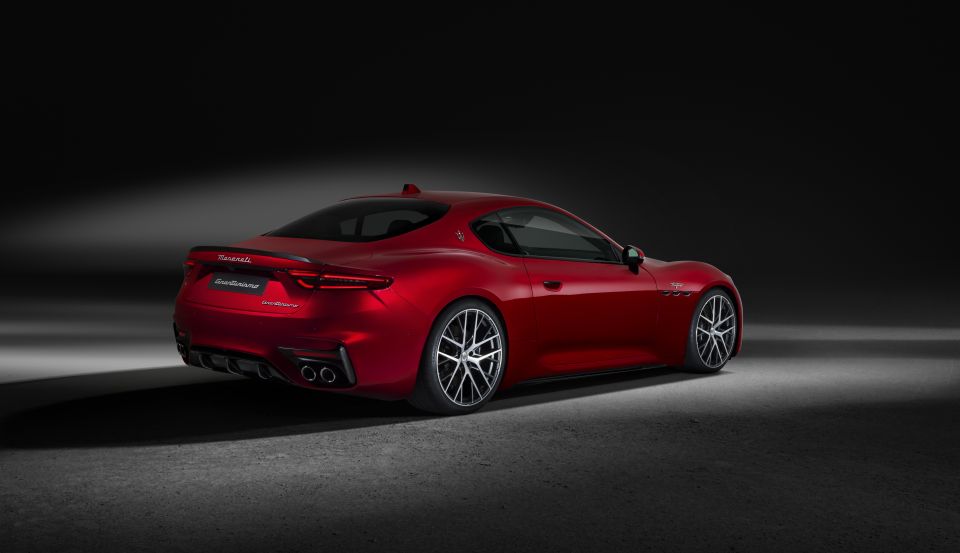

Senior Road Tester

Senior Road Tester


Senior Road Tester

Senior Road Tester
Where expert car reviews meet expert car buying – CarExpert gives you trusted advice, personalised service and real savings on your next new car.
With such massive investment required, it’s a rare thing these days when car designers are given a clean sheet on which to design the next-generation of a brand-defining model like the 2023 Maserati GranTurismo.

But that’s exactly what Klaus Busse (head of design at Maserati) and his team were afforded with only the second-generation GranTurismo – a car which has embodied the very core of the Trident-badged marque since 2007.
So why does this new-gen model look the same as the car it replaces? Given Klaus and his team were pretty-much given free rein to come up with an all-new, box-fresh design which would not only blow the competition out of the water, but also wow the legions of Maserati aficionados and lovers of Italian exotica the world over.
At least that’s exactly what the world’s motoring press were thinking when we joined a Google Meet in the latter half of 2022 for a deep dive into the car. It’s a fair question, right?
Turns out, sales of the ageing Maserati GranTurismo had actually been on the rise during its final years of production, especially of the high-powered Trofeo model with its sonorous 4.7-litre naturally-aspirated V8 belting out more acoustic delight than Italian operatic tenor, Andrea Bocelli.
The numbers don’t lie, and according to the man responsible for product planning at Maserati, at least for sports cars (MC20 and GranTurismo), Massimo Capaldi, there were no complaints from owners at least in terms of exterior design – they liked what they saw.

But there were grumblings. Namely about the very average Chrysler-based infotainment system and the less-than-snappy single-clutch transmission.
While both aspects have been massively overhauled in the new model, it’s also why the overall shape and design of the car appears identical to the untrained eye despite the fact there’s not a single carryover panel.
Instead, Maserati chose to focus on more technical aspects for better performance, improved handling and ride, while introducing a fully-electric vehicle for the first time.
Indeed, Capaldi and everyone else at Maserati charged with both protecting and advancing the Trident brand understands it has an icon in the GranTurismo, and to move away from what its customers most cherished would have been completely foolish.
And let’s not forget it was Maserati who effectively coined the Gran Turismo body style with its stunning A6 1500 in 1947. Here was a thing of sheer beauty, only to be outdone by the gorgeous A6 GCS from 1953.

And frankly, no other luxury carmaker has embodied the Gran Turismo design and unique packaging better than Maserati and its GranTurismo.
Indeed, it’s these qualities that resonate so strongly with those same customers and in the fact it’s a genuine two-door, four-seat GT in which adults can actually travel in the rear seats in relative comfort, even on longer stints (as tested over 50km in the twisties).
If you’re looking for genuine rival makes and models, they’re few and far between although Maserati still counts the likes of the Porsche 911 Turbo, Bentley Continental GT, Aston Martin DB11, Ferrari Roma and Porsche Taycan if we compare it to GranTurismo’s mega-quick Folgore EV version.
There’s also the BMW M8 – an achingly beautiful coupe, but like the others listed above, it simply can’t match the Maserati in backseat comfort.
Take the time to run your eyes over every panel of the new GranTurismo one-by-one, and you’ll see a leaner, more sinuous silhouette than its predecessor. It might take a few moments before your eyes take it all in but this is a more handsome Maserati than the car it replaces, thanks to inspiration from the brand’s halo model – the MC20 supercar.
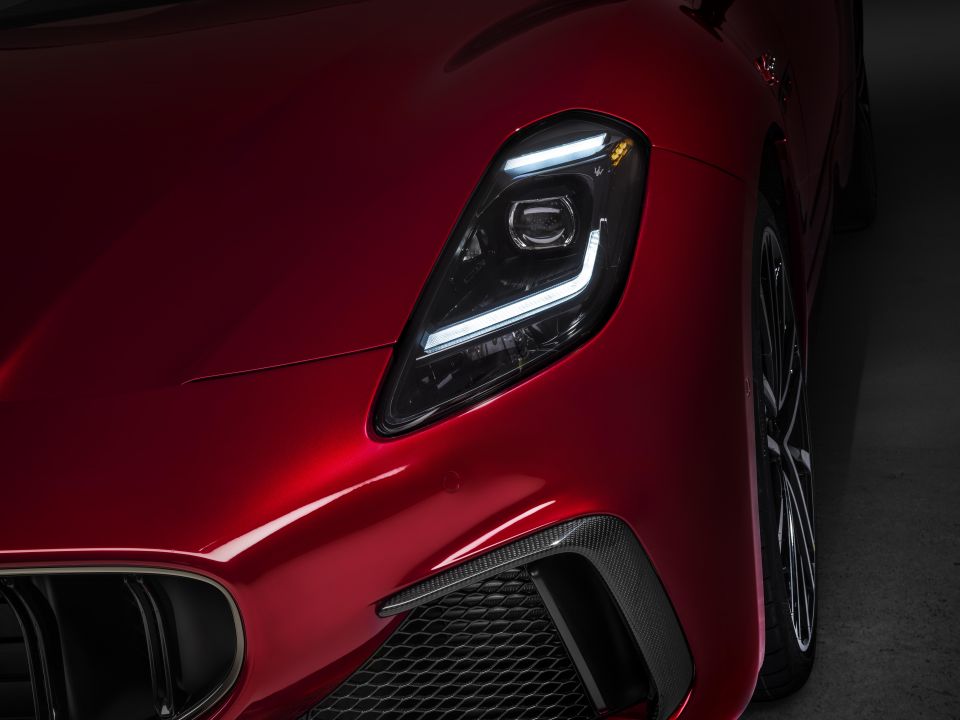
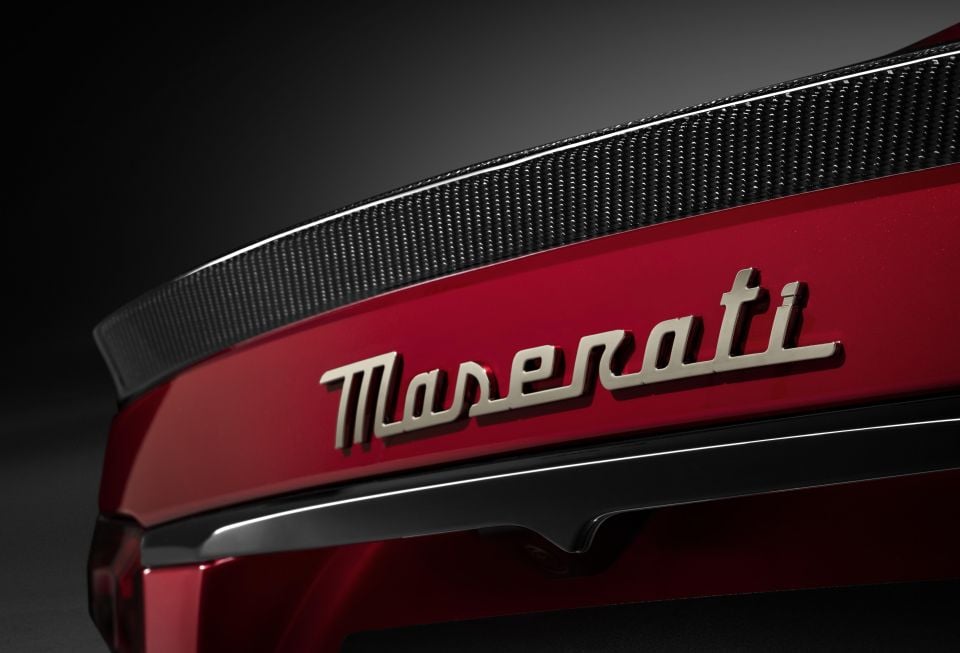
The prized design piece is surely GranTurismo’s huge 3mbonnet/front guard combo it calls Cofango – a portmanteau term made up of cofano (bonnet) and parafango (fender) as a single panel visually. The end result is a curvaceous bit of styling that also borrows cues from the spectacular lines of the Maserati A6GCS Berlinetta by Pininfarina from 1953-54.
Nevertheless, the vertical headlight treatment is a design element borrowed directly from the MC20, while the grille is both more accentuated and more graceful at the same time. There’s also greater emphasis on the wheel arches – more shapely front and back – again from the A6 GCS in my view and all the more exotic for it.
Out back there are new LED tail lights – a combo of the classic Maserati boomerang and a harpoon from the depths of Neptune’s undersea domain no doubt. But while the look itself is unmistakably Maserati, it’s not quite as distinguished as the front-end treatment.
Inside, it’s a full-scale makeover as demanded by Maserati owners and not before time. There are multiple digital screens with superb clarity, colour and graphics along with notable upgrades in materials and craftsmanship throughout. Here it borrows from the brand’s newest SUV, the Grecale.
There’s no gear lever, instead, a horizontal bank of four buttons for gear selection, including ‘M’ for Manual, which has freed up the centre console for cupholders and extra storage.
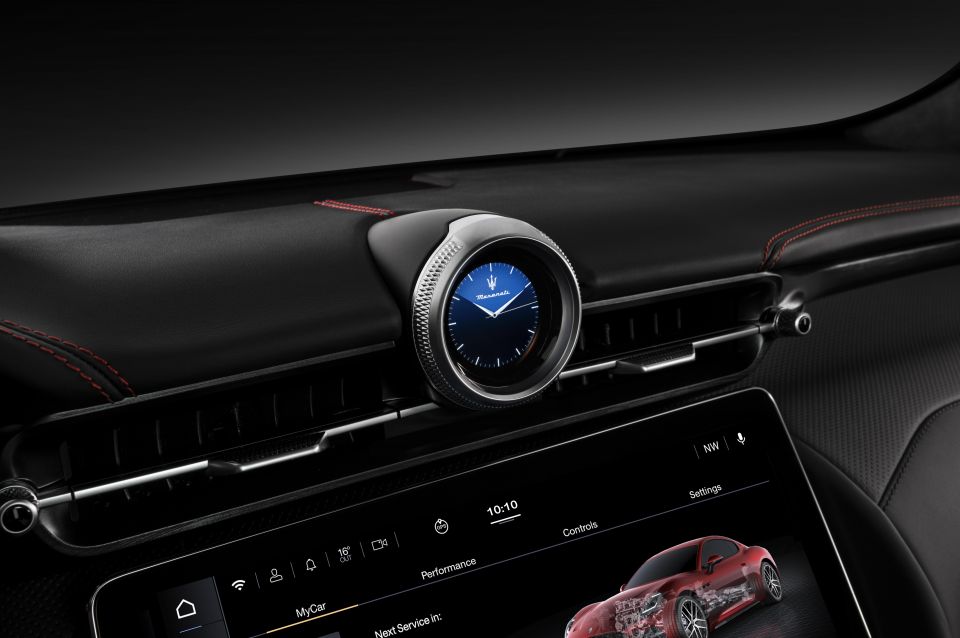
The signature Maserati clock has also moved into the digital age and there’s a new steering wheel design in a choice of two colours as well as new lightweight sports seats that help lower the car’s stance and overall weight despite standard all-wheel drive across the GranTurismo range.
While the V8 is gone, petrol versions including the entry-level Modena and more powerful Trofeo get detuned versions of the twin-turbo V6 Nettuno powerplant from the MC20 for serious levels of go.
The second-generation GranTurismo also introduces Maserati’s first all-electric car called the Folgore which will automatically assume range-topping status by virtue of its three electric motors, cutting-edge technology and 1350Nm of twist for retina-crushing acceleration and hypercar performance all-round.
With cars not expected to arrive locally until late 2023-2024, Maserati Australia is yet to set pricing for its new-generation GranTurismo.
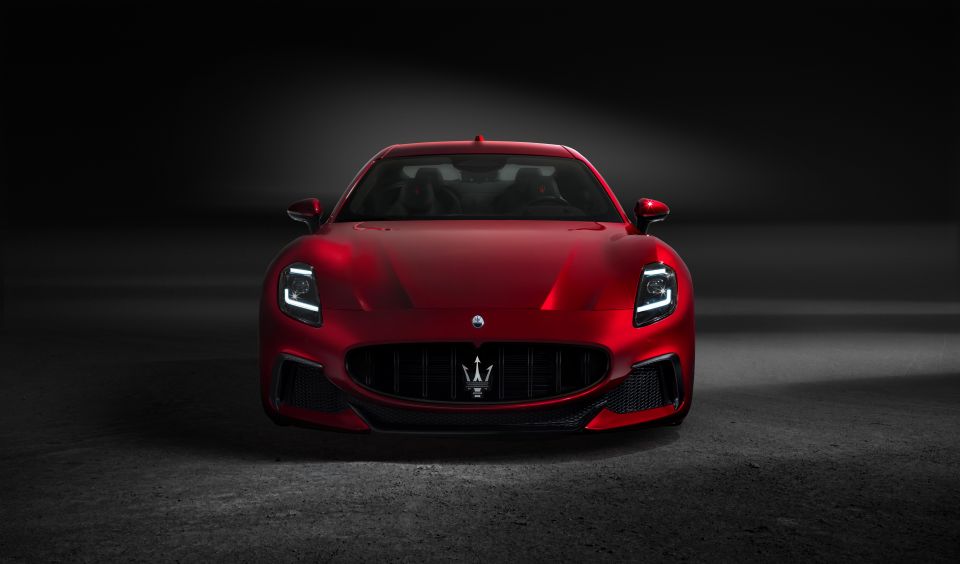
But given the car’s lightweight chassis, Nettuno engine firepower and ballistic-class EV performance for the Folgore, expect to pay more for what is a demonstrably more capable evolution of this genuine Italian exotic than its predecessor ever was.
However, let’s not forget Maserati’s very own checklist of rivals as a rough guide to where it might fix GranTurismo’s pricing, namely; Porsche 911 Turbo Coupe ($432,000), BMW M8 Coupe ($374,400), Bentley Continental GT Speed ($543,400), Aston Martin DB11 ($450,100) , Ferrari Roma ($409,888) and Porsche Taycan Turbo S ($351,000) as a direct comparison with the Folgore. Pricing excludes on-road costs.
Maserati will also offer an limited run of 300 PrimaSerie 75Anniversary Launch Edition models featuring exclusive materials inside and out as well as four specially-selected exterior paint colours.
The PrimaSerie will be available in just four configurations with 75 produced for each specification. In Trofeo trim there will be Grigio Lamiera and Nero Cometa to choose between, while GranTurismo Folgore EV buyers can select from Rame Folgore and Blu Inchiostra.
Buy your new car without the stress. It's fast, simple and completely free.

Great service from Travis and team, second time I have used this business would not hesitate to recommend them to anyone
Craig C.
Purchased a Ford Ranger in Sunshine Coast, QLD
CarExpert helped Craig save thousands on his Ford Ranger, now let us save you on your next new car.
Find a dealEven before you get to appreciate GranTurismo’s newfound screens and technology (and there’s plenty of the good stuff) there’s a decided feeling of space and comfort in the cabin – more than any other two-door high-performance four-seater I’d suggest.
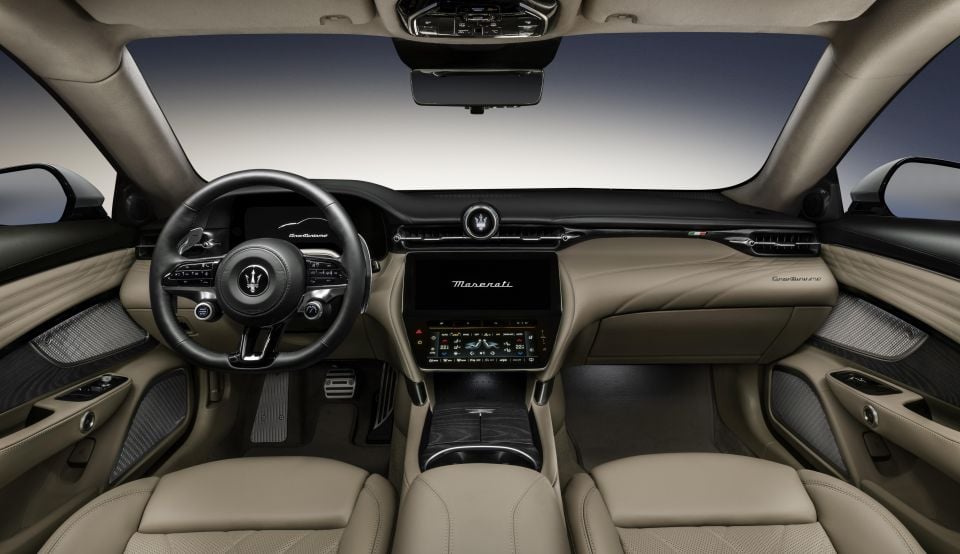
Remember, this is a clean-sheet design from the ground up, so expectations are high for an Italian GT with such enviable heritage.
The previous model was hamstrung with kit shared with less prestigious Chrysler models, and while updates improved things a tad over the years, none of it ever measured up to be acceptable with cars billed as high-end Italian luxury.
Thankfully, that time has passed because with the latest-generation of GranTurismo, Maserati absolutely nails it with an array of high-quality materials, craftsmanship and top-shelf electronics. This is a cabin good enough to stand up to any and all rivals – regardless of which model variant you might choose.
However, most of our time at the launch event was spent in the full-fat Trofeo, but my stint in the entry-level Modena also revealed an equally resplendent time behind the wheel and just as comfortable.


Much of the cabin layout and design is borrowed from Maserati’s new mid-size SUV the Grecale, though the materials look and feel more luxurious in the GranTurismo.
Nevertheless, screens, steering wheel, seats and trademark clock are all fresh out of Maserati’s design studio and now worthy of this storied Italian marque.
All three screens offer crisp graphics and sharp colour separation, especially the infotainment and driver’s displays. The wireless Apple CarPlay was bulletproof in terms of its robustness in the more remote countryside, as was the factory mapping system.
I’m ashamed to admit I have no idea how the prized Sonus Faber audio system sounds. At 5000rpm you won’t care what it’s like, you’ll simply want to wind up the V6 Nettuno engine to its 8000rpm rev limit and thank god you’re in Italy.
While Maserati has gone for an entirely minimalist approach to switchgear with its centre console completely devoid of knobs, dials and old-school buttons with the exception of the blue stop/start and drive-mode selector on the steering wheel, it’s all very intuitive and unlikely to cause any such first-time grief.
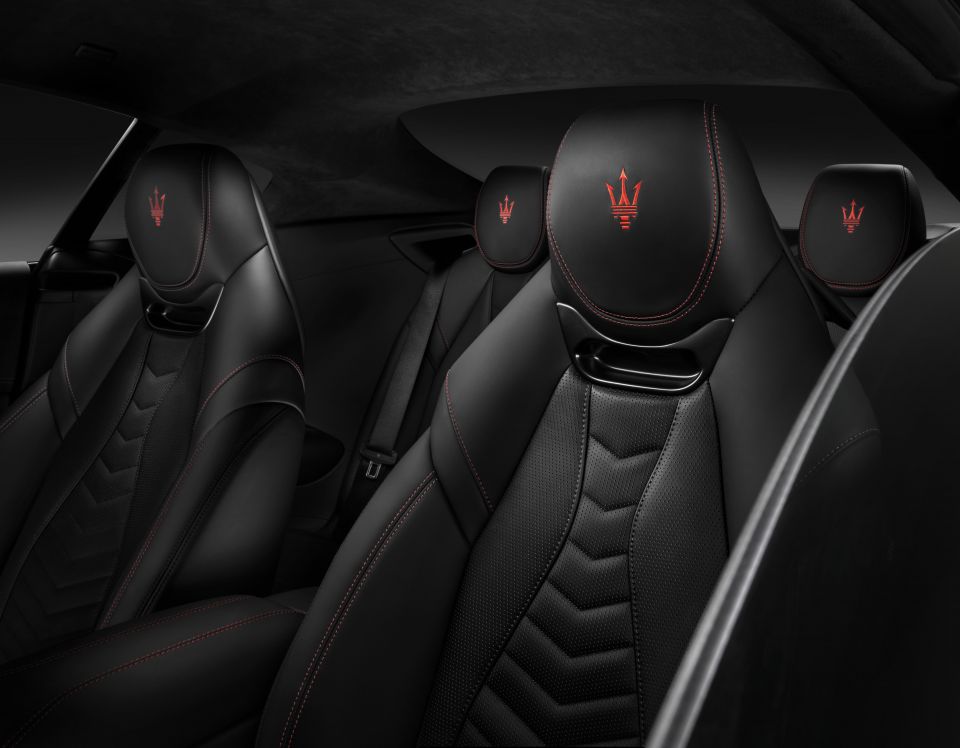
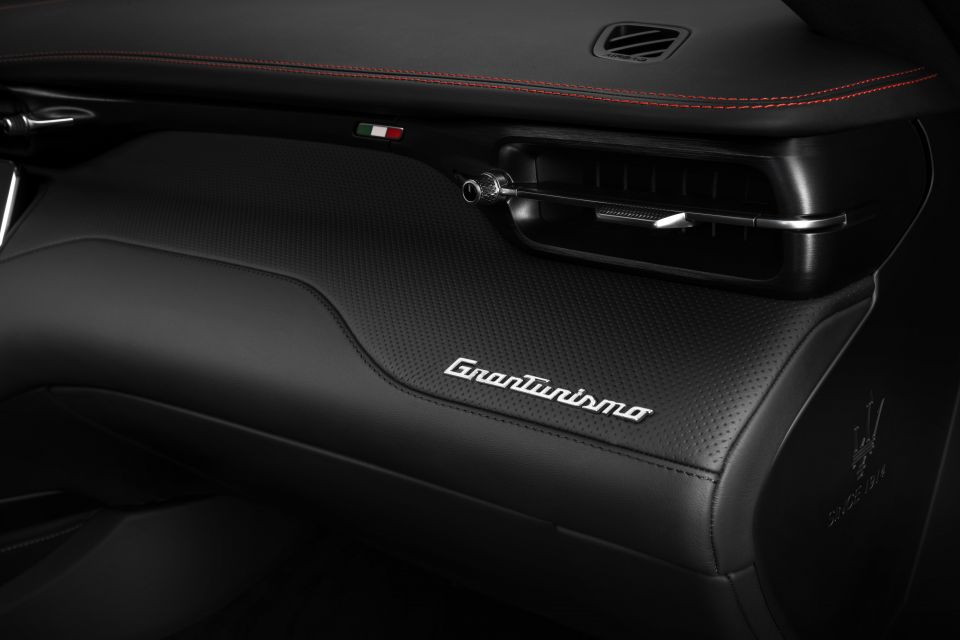

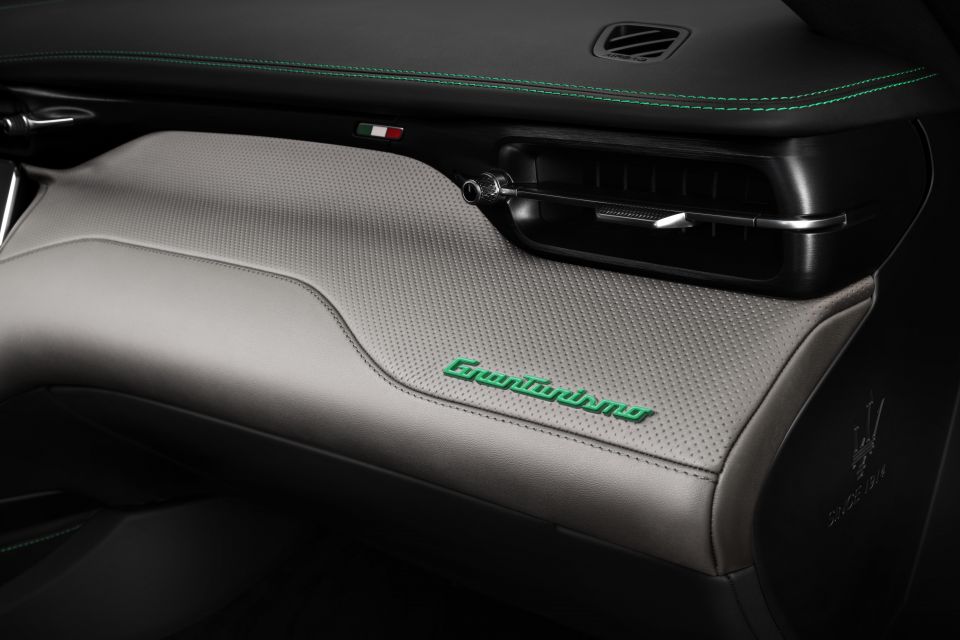
The wheel itself is similar to that in the MC20 and available in either a denim or Nero leather, as well as perforated side grips for the Trofeo, exclusively.
The one-piece sports seats are truly superb for their lightweight construction, yet thickly padded cushioning.
The bolsters are deceptive in that they’re not at all aggressive but somehow manage to hold you bolt upright even when you’re blasting along the curviest of Roman bends.
The same goes for rear-seat passengers. Though, had I not had a 50km stint in the right-rear pew, I wouldn’t have thought it possible.
These are proper adult-cosseting seats with similar levels of support and comfort as those up front.
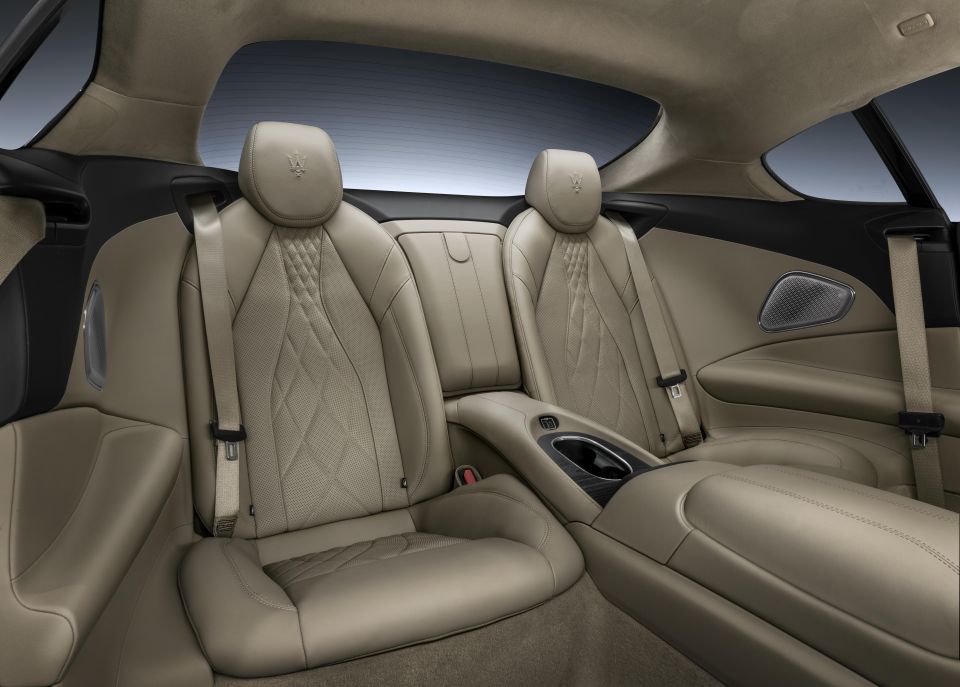
Forward vision from the back stalls is also superb given the seat sits demonstrably higher than those up front, and yet, you still feel like you’re sitting deep into the chassis. This is where the GranTurismo really starts to pull away from two-door, four-seat rivals.
Boot space is up too, from 260L to 310L in the petrol versions, while the electric Folgore makes do with 270L due to its EV packaging.
Although I favoured Trofeo’s blend of Rosso GranTurismo over Black leather upholstery inside with stitching to match the paintwork, I ended up driving the coveted PrimaSerie 75 Anniversary version in its chosen Grigio Lamiera paint work, paired with a two-tone effect leather with exclusive red embroidery on the headrests.
Both petrol versions of the GranTurismo get the same 3.0-litre twin-turbo Nettuno V6 out of Maserati’s mid-engine super-sports car – the MC20 – but in two different states of tune.
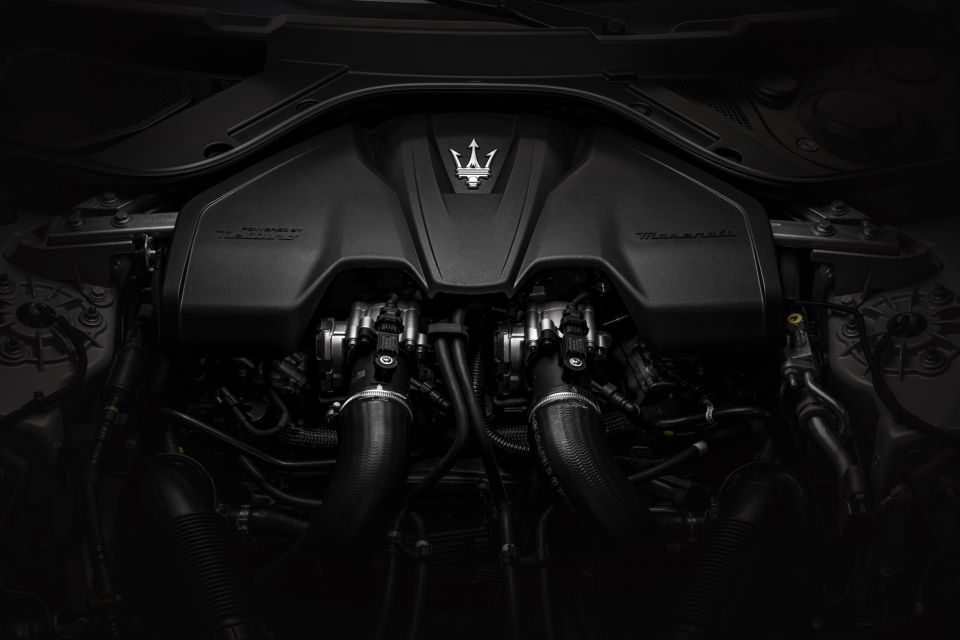
The base GranTurismo Modena makes 365kW of power and 600Nm of torque at 3000rpm. It’s good for a 3.9-second 0-100km /h sprint, and will do 0-200km/h in 13 seconds. Top speed is 302km/h.
The more powerful Trofeo ups the ante with 410kW and 650Nm, along with a faster sprint time of 3.5 seconds. Standstill to 200km/h is over in 11.4 seconds, and top speed also ratchets up to 320km/h.
It’s paired with the ZF8HP75 eight-speed automatic transmission sending drive to all four wheels in all versions of the new petrol-powered GranTurismo. It’s a compact design with an all-wheel drive system that weighs just 40 kilograms and capable of delivering up to 750Nm of torque.
Interestingly, Maserati’s chief engineer for the GranTurismo told us it could potentially run the power up to the same levels as the MC20, as there are no issues with the transmission and increased loads.
But unlike the MC20 which uses a dry sump transmission due to is tighter and lower mid-engine packaging, the GranTurismo adopts a wet-sump gearbox, which is less expensive and arguably more reliable.
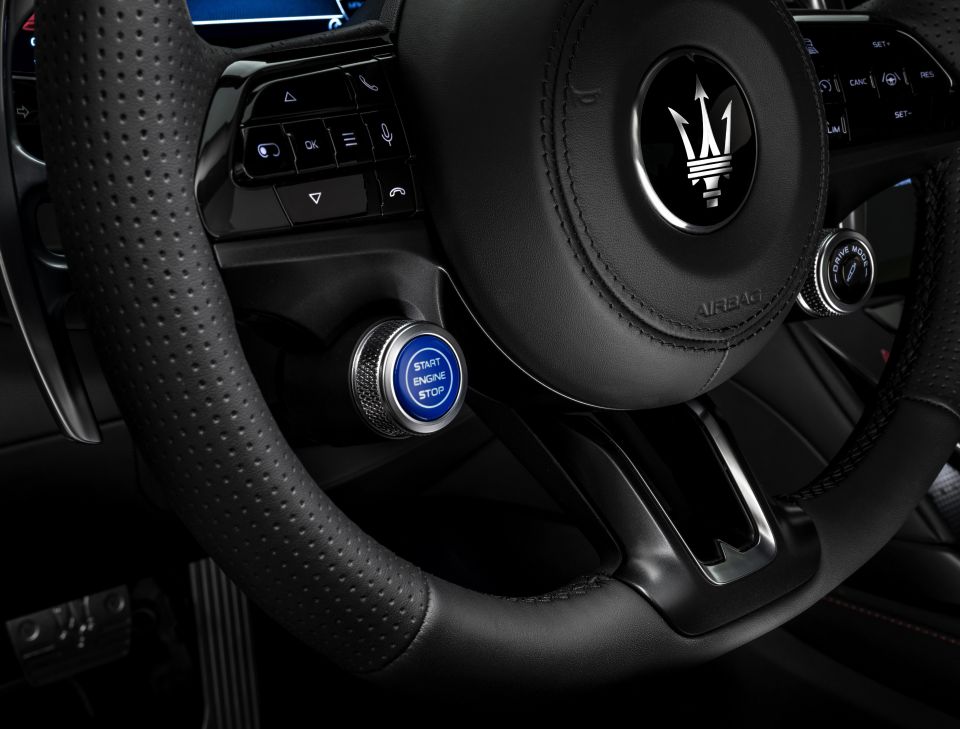
Another feature of Nettuno V6 in the GranTurismo you won’t find in the MC20 is its ability to shut down half the cylinders (cylinder deactivation) when you’re cruising along on a motorway.
The all-electric and range-topping GranTurismo Folgore’s (reviewed here) performance claims are spectacular to say the least, easily eclipsing even the MC20.
It uses three 300kW electric motors (two rear, one front) for combined outputs of 560kW (605kW on boost) and a tarmac-twisting 1350Nm of torque to all-four wheels.
It’s good enough to cover the 0-100 dash in just 2.7 seconds and to 200km/h in a staggeringly quick 8.8 seconds. Top speed is a rapid 325km/h, while it claims a WLTP range of 450 kilometres on a full charge.
There’s nothing like dropping into a completely new-generation Maserati lovingly designed and developed in Italy from a clean sheet by a team of passionate diehards with something to prove.

Where expert car reviews meet expert car buying – CarExpert gives you trusted advice, personalised service and real savings on your next new car.
While others might lament the loss of the previous model’s naturally-aspirated V8, I on the other hand was chomping at that bit, given the Trofeo I was sitting in was packing the same twin-turbo V6 from Maserati’s mid-engine supercar – the ballistically quick MC20 – albeit detuned a tad.
The default drive mode on start-up is GT, and that’s fine for meandering out of Rome proper from our base in Fiumicino, close to Rome airport. But we were heading for the quieter, less populated area of Nepi around 60 kilometres away, where you’ll find magnificent old villas and less-travelled roads across twisty undulating terrain.
Nevertheless, there was also 20-30km of six-lane Autostrada to lead us out of Rome – presenting an excellent test canvas on which to stretch the Nettuno V6, but not in GT mode. Not today.
There’s nowhere near enough of that richly refined Maserati snarl that’s best heard from 4000rpm in Sport. It’s also the mode that unleashes maximum engine performance from the twin-turbo six, otherwise, it’s all a bit reserved.

Here’s the thing. It doesn’t seem to matter how many cars you drive or launch programs you attend, you’re always respectfully cautious at the start of proceedings – at least for the first few minutes while you get a feel for the car and locate all the important functions and settings before the fully-fledged assault that always comes.
Interestingly, when left in auto mode, the ZF is clearly calibrated for maximum fuel efficiency as it quickly shifts into top gear. It’s not until you dial up Sport and locate the ‘M for Manual’ button does the Nettuno start to come alive – at least on the Autostrada.
And, does it go. It’s fortunate that most of Italy’s Polizia Stradale seem to be avid car enthusiasts that generally encourage exotic car drivers to demonstrate a car’s pace and performance, because I don’t know what speed we were doing, but let’s just say this Maserati GranTurismo Trofeo wasn’t exactly hanging about.
Mid-range pull is relentless and the speeds are huge. I don’t recall applying full-throttle for more than a few seconds before having to lift off and that was just going from fourth to fifth. The Trofeo claims a top speed of 320km/h but even at two-thirds of that pace – there’s so much more remaining underfoot.
Don’t get me wrong, off-the-line pace is mighty rapid but pleasantly linear too, it’s just that when you shift into third with a pedal full of throttle – you feel like you’re piloting a genuine GT3 racer blasting down the Mulsanne straight at Le Mans. And the sound isn’t bad either – above 4000rpm the Nettuno V6 produces a gloriously loud snarl akin to a GT racer, and it just gets louder.

The gearbox is a special treat. Smooth when left to its own devices but always willing to rifle up the ratios at the slightest hint you’re after more. It feels properly race bred in this regard. The paddleshifters are fixed but they’re also perfectly placed and long enough to reach in any given situation – it feels like a car designed by enthusiasts for enthusiasts, but dead easy to pilot either way.
It’s a big car this new GranTurismo – stretching almost five metres in length and more than two metres wide. Nevertheless the steering weight is light enough and the ratio quick enough not to warrant any excess arm twirling. It’s also more than capable of slicing through endless fast-flowing bends without breaking a sweat.
In fact, it seems to offer greater competency and feedback the harder you push in terms of body control and chassis balance, making the car a lot of fun in these twisty conditions on winter tyres no less – that’s despite temperatures rising to 13 Centigrade for our drive program.
Winter tyres are generally used in these parts when temperatures drop below 8Centigrade often causing ice to form on the road surface, but in warmer temperatures grip and traction is equally reduced. We certainly look forward to driving the car in local conditions on summer tyres for a more complete performance evaluation.
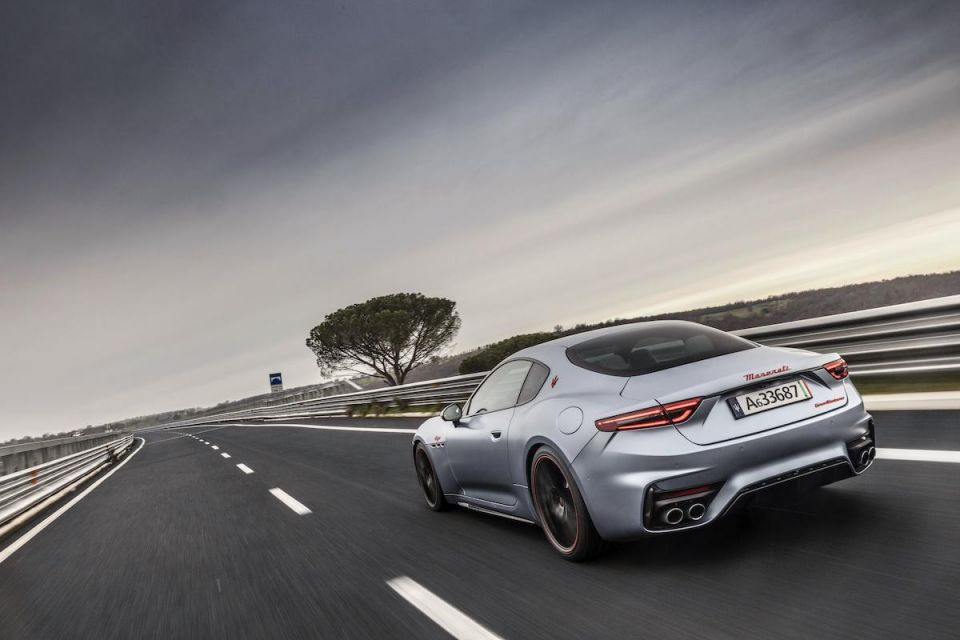
The standard steel brakes aren’t particularly large by today’s standards (380mm, six-piston front, 350mm, four-piston rear), but stopping power for a 1795kg GT is superb.
That said, expect Maserati to eventually offer more powerful and more expensive carbon-ceramic versions in due course.
Then there’s ride comfort to gloat about on some of the most decaying roads we’ve driven on in some time. Potholes, broke-down surfaces with crumbling edges and the GranTurismo simply crushed most of it without affecting the car’s line – even mid-corner.
With customer cars are not expected to hit local showrooms before end of 2023 or early 2024, Australian pricing and specifications are likely to be a while off yet, but here’s what customers get in their new-gen GranTurismo.
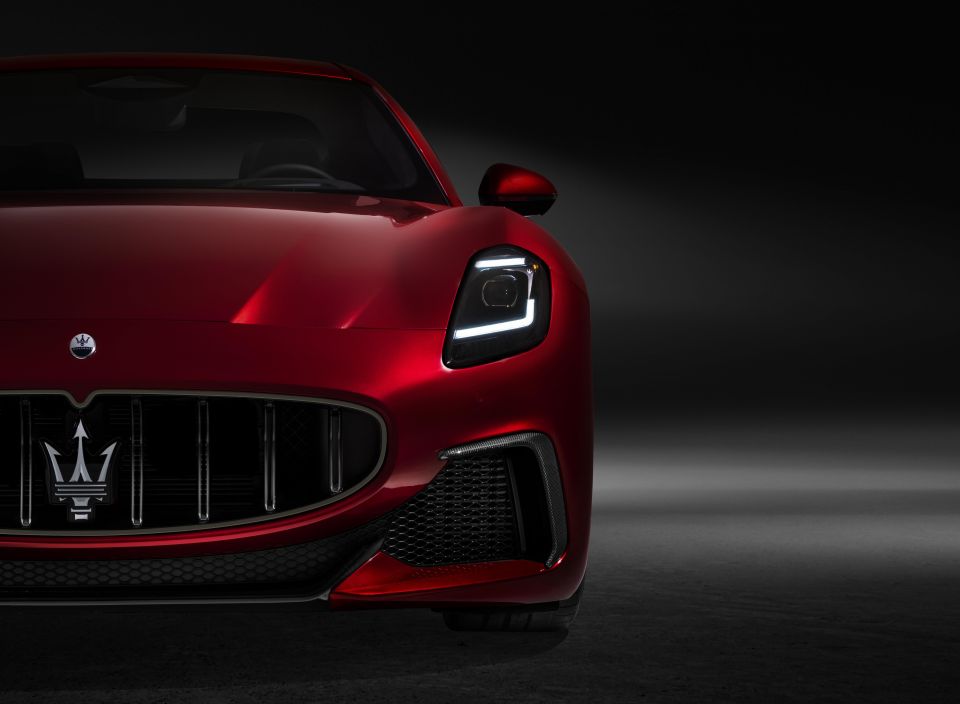

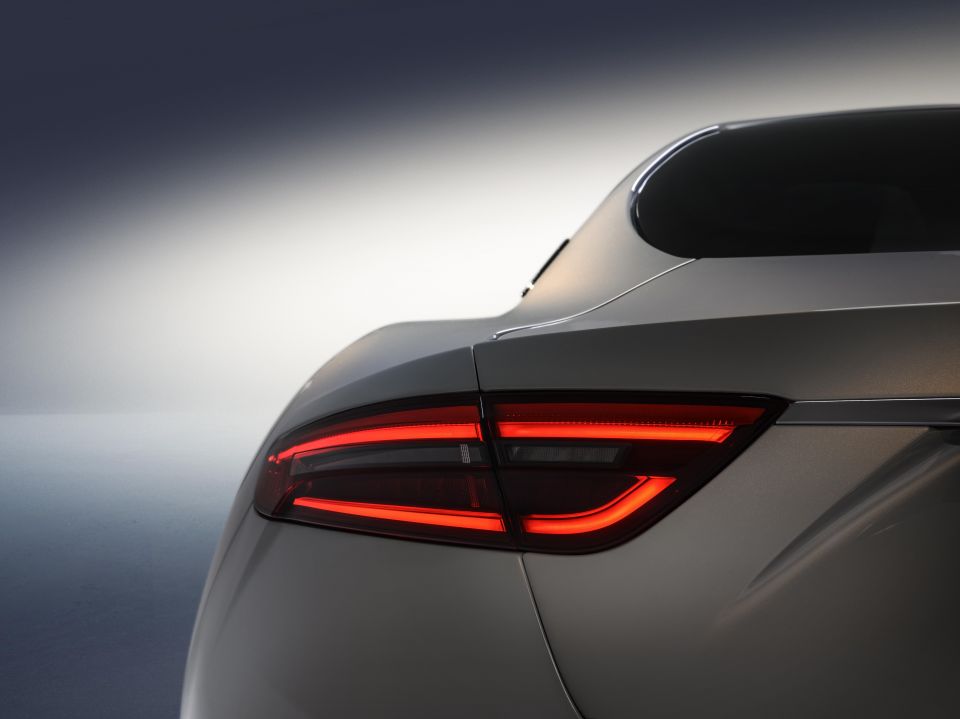

The GranTurismo Modena, Trofeo, and Folgore all use double-wishbone front suspension with air springs with electronic adjustable dampers. All three have multi-link rear suspension, with single-chamber air springs and electronic adjustable dampers. The Modena has a mechanical self-locking rear diff, while the Trofeo and Folgore use an electronic self-locking unit.
Each uses 380 x 34mm front ventilated discs with Brembo six-piston fixed callipers, and 350 x 28mm rear ventilated discs with Brembo 4-piston fixed callipers. Brake calipers also come in a range of seven colours, including matte Nero, Nero, Rosso, Giallo, Blu, Matte Rosso and Matte Dark Rame (exclusive to Folgore).
Interestingly, the Folgore gets the same size brake set-up as its significantly lighter petrol-powered stablemates thanks to GranTurismo’s regenerative braking system which slows the car down the moment you come off the throttle to the tune of 0.65g.
The staggered wheel configuration comprises 21-inch rims with 295/30 tyres at the rear, and 20-inch wheels with 265/30 or 265/35 rubber at the front. GranTurismo buyers can choose between four different wheel designs and various finishes for a total of seven options.
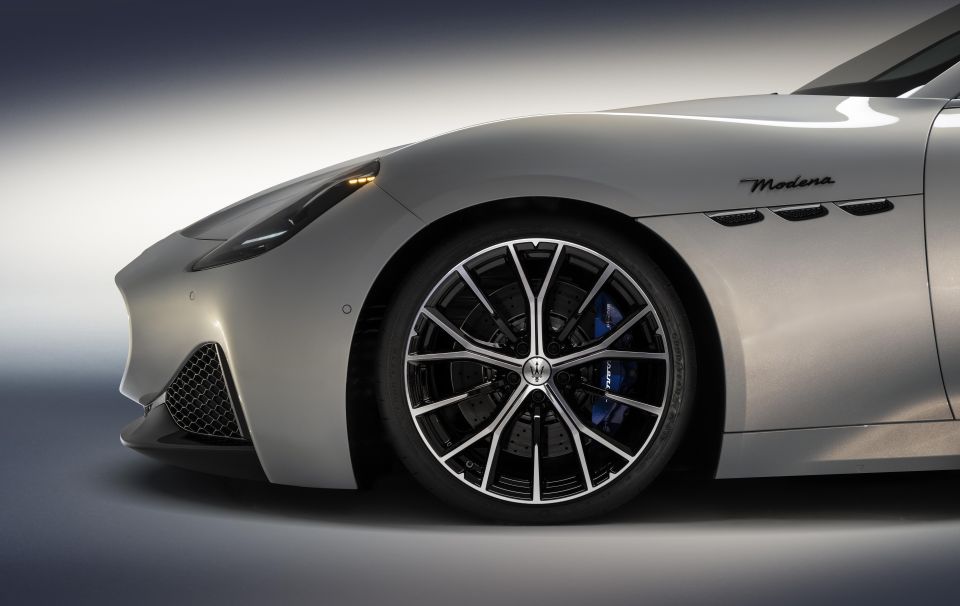
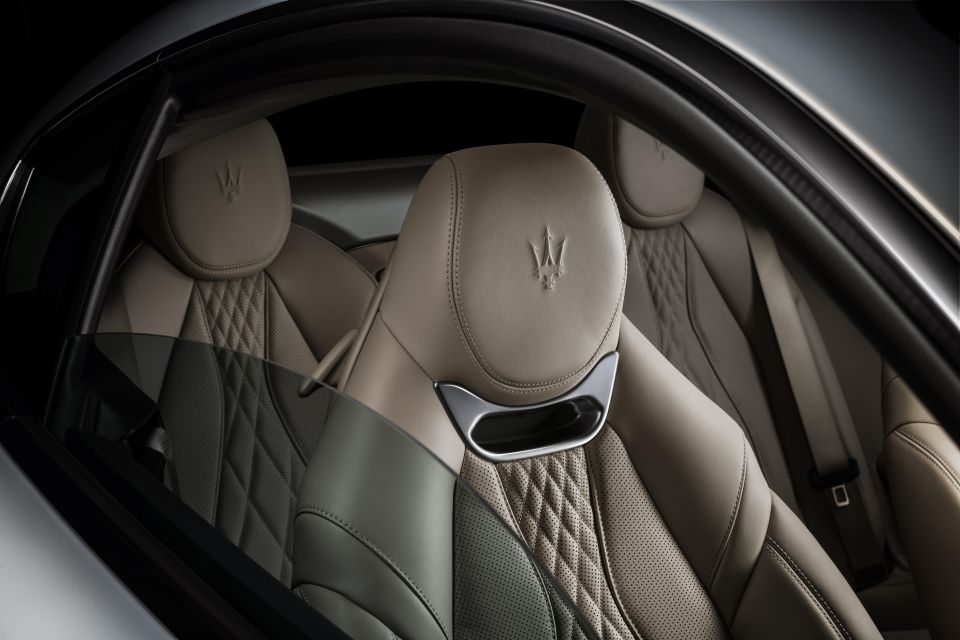
The GranTurismo Folgore claims to sit lower than any other battery-electric car on the market, but at 2260kg, the Folgore EV weighs a whopping 465kg more than the Modena and Trofeo (1795kg) versions.
There are various drive modes to change the engine and chassis behaviours, called Comfort, GT, Sport and Corsa, with an ESC-off option for the track. The Folgore’s modes are GT, Sport, Corsa, and Max Range which dials things back to eke out more miles.
Inside, the GranTurismo, regardless of variant, features a 12.3-inch touchscreen infotainment system, a 12.2-inch digital driver’s display with four different layouts, and an 8.8-inch lower display for the climate control.
There’s also a projected head-up display, along with a digital rear-view camera (in addition to the standard view), borrowed from the MC20 supercar.
The infotainment system runs on the Android Automotive operating system and includes wireless Android Auto and Apple CarPlay, and gives owners the option to create up to five user profiles. There’s also standard gesture control.

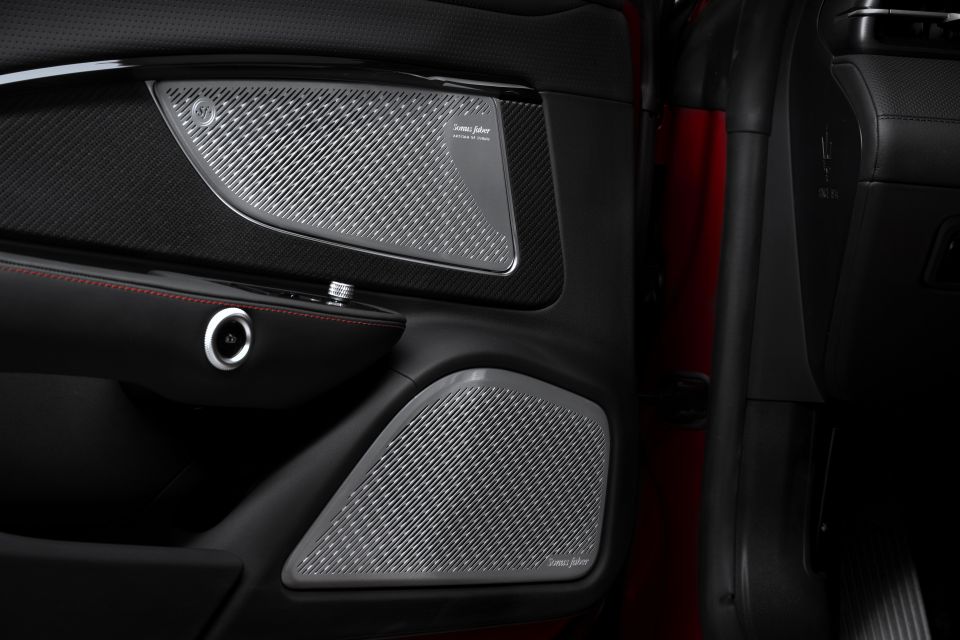
With Maserati Connect, GranTurismo owners also get Amazon Alexa Home-to-Vehicle control, on-the-road connectivity, Maserati Guard stolen vehicle tracking, and over-the-air software updates. A 14-speaker 860W Sonus Faber sound system is standard, with a 19-speaker sound system optional.
As with the Grecale, the GranTurismo gets a digital version of the Maserati’s trademark dash-mounted clock that’s not only multi-functional, but also responds to the voice command “Hey Maserati” to do things like change the cabin temperature. There are three available skins to choose from.
There’s no gear lever in the GranTurismo, freeing up space on the centre console.
The steering wheel is available in Nero (black) and Denim, the latter exclusive to the Folgore. The Trofeo gets perforated leather wrapping for the wheel, plus a bright blue start/stop button.
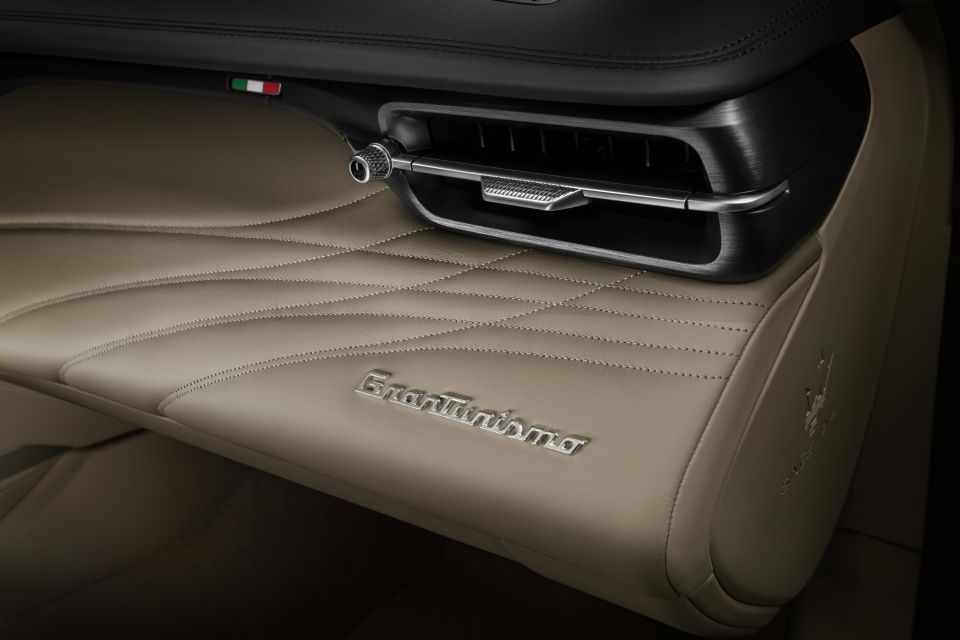
Prominent aluminium paddle shifters sit behind the wheel, even on the electric Folgore where they’re instead used to adjust the level of regenerative braking.
The Modena offers a choice of black, tan or “greige” leather upholstery, with dark ash burl wood accents with an open-pore finish.
The Trofeo’s leather upholstery has a herringbone pattern, and is available in either black, red or ice. Black interiors are offered with a choice of yellow, red or grey chevron stitching.
Finally, the Folgore features extensive use of sustainable materials, including Econyl fabric, a nylon produced from recycled fishing nets, on the seats, roof and pillars.

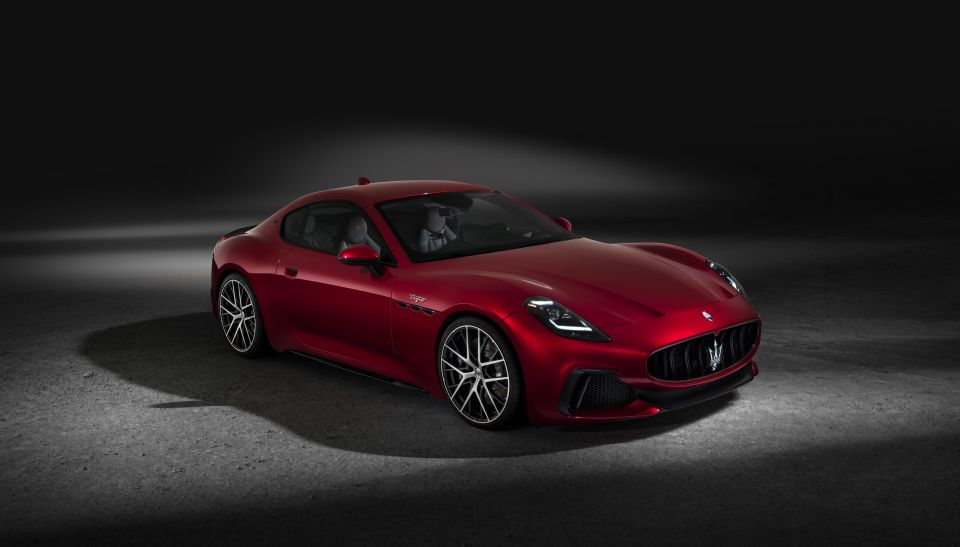
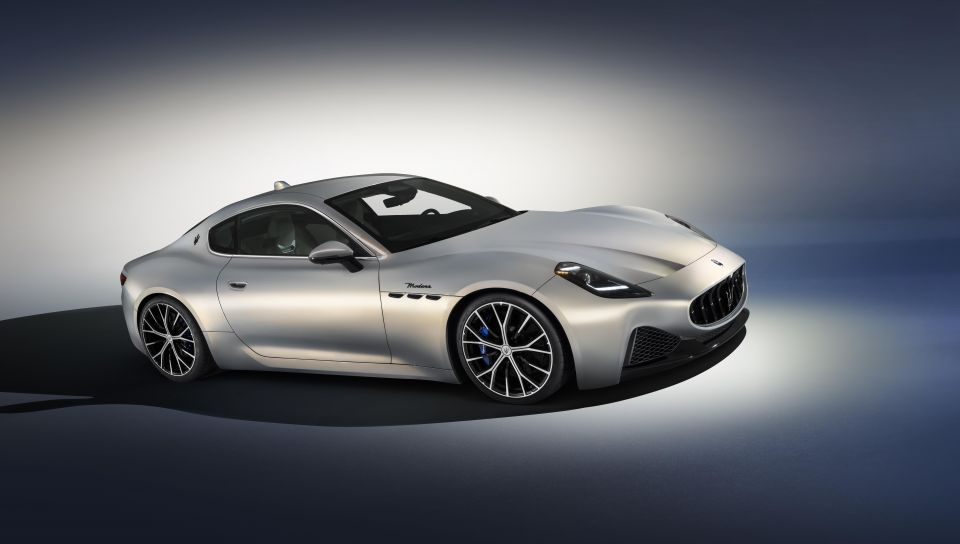

The 2023 Maserati GranTurismo has not been crash tested by either ANCAP or Euro NCAP and therefore has no safety rating applied to it.
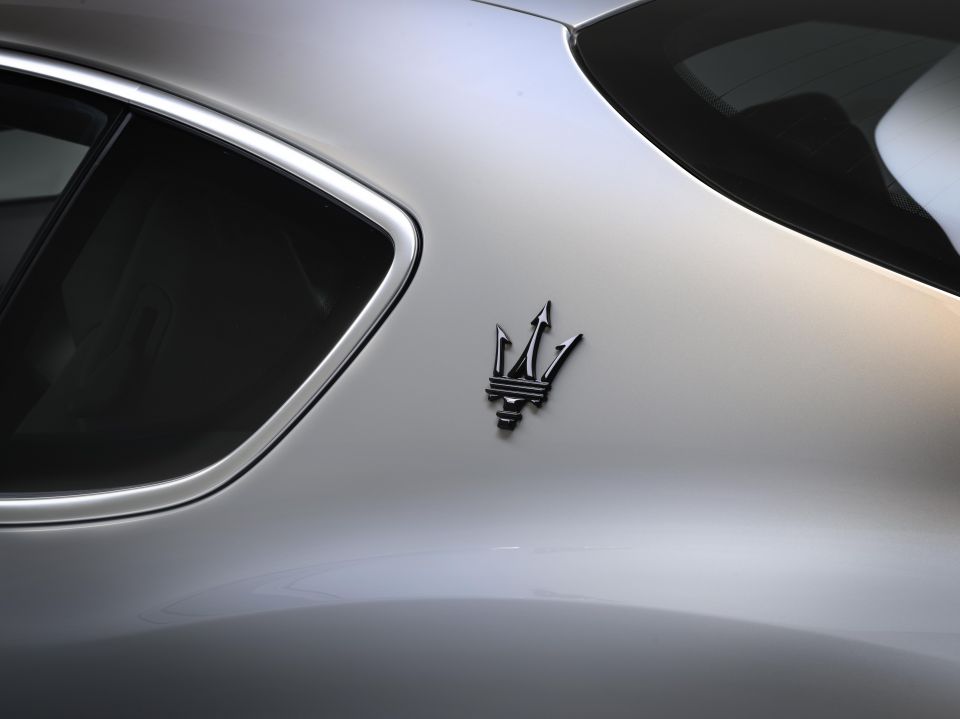
While we still don’t have pricing and specifications for the 2023 Maserati GranTurismo including an inventory of safety features, main safety features new to the model range include the following:
Maserati Australia will offer GranTurismo buyers a three-year, unlimited-kilometre warranty, along with three years free scheduled servicing and roadside assist.
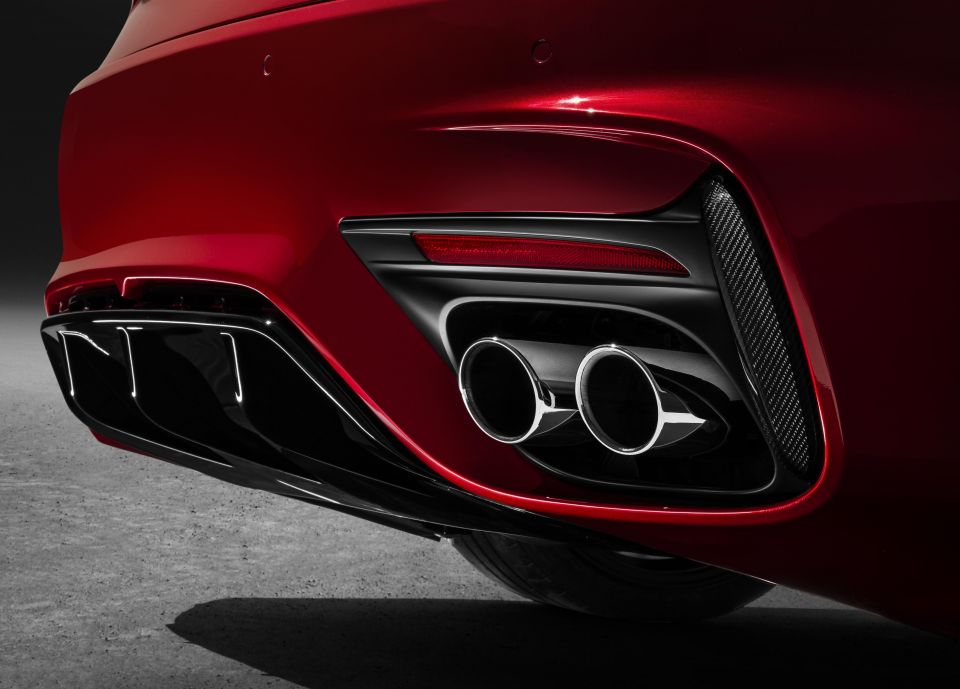
Further details will be available closer to the car’s arrival here.
If you’re going to use previous model GranTurismo as some kind of benchmark in your quest to evaluate of purchase the new version outside of its exterior design – stop that nonsense right now.

Maserati started with a clean sheet for this new-generation GranTurismo, and although at first glance it looks similar to its predecessor, this is a vastly superior car in every way from design and technology to all-round flat-out performance.
Even on winter tyres with tread blocks instead of grooves, the GranTurismo feels more sports car than GT from behind the wheel while still offering superior levels of passenger comfort to any of its rivals, especially for those adults in the rear seats (as tested).
Until we get to drive it on summer tyres in local Aussie conditions we won’t actually know how much better the new Maserati GranTurismo really is – nevertheless this is a proper Italian exotic with a sensationally wide breadth of capability.
And , it’s also an achingly beautiful car that turns heads, even in Italy.
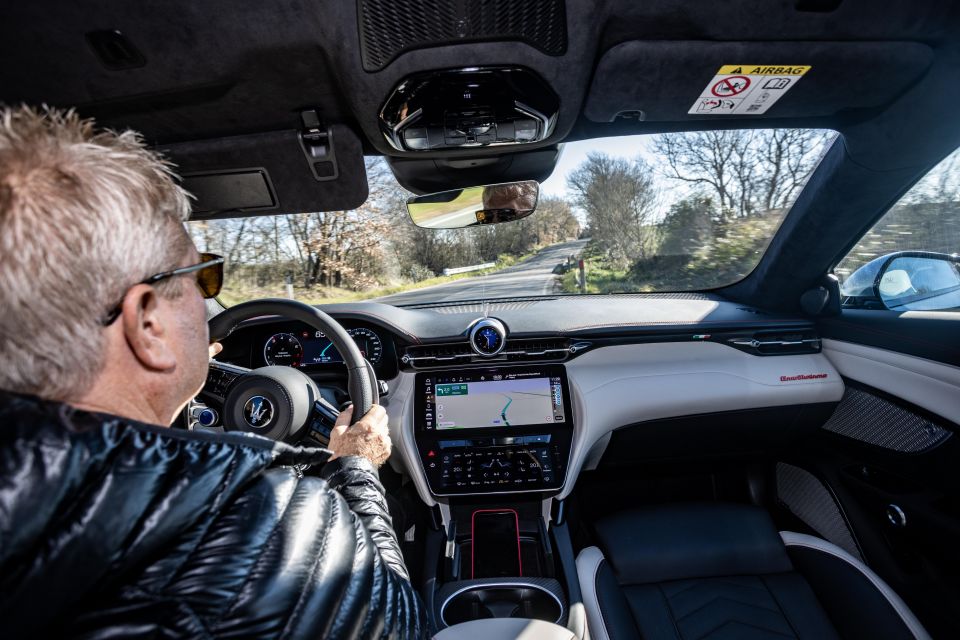
Click the images for the full gallery
Where expert car reviews meet expert car buying – CarExpert gives you trusted advice, personalised service and real savings on your next new car.
Anthony Crawford is a CarExpert co-founder and senior presenter with 20+years in automotive journalism and content creation.


Matt Campbell
1 Hour Ago


Max Davies
17 Hours Ago


William Stopford
17 Hours Ago


Derek Fung
18 Hours Ago


Max Davies
1 Day Ago


William Stopford
2 Days Ago